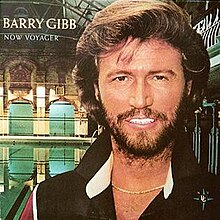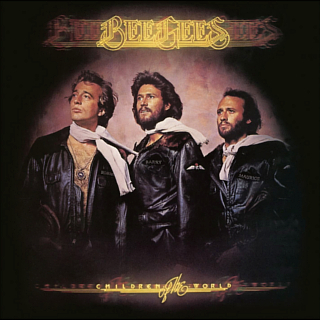
Children of the World is a 1976 album by the Bee Gees. The first single, "You Should Be Dancing", went to No. 1 in the US and Canada, and was a top ten hit in numerous other territories. It was the group's fourteenth album. The album was re-issued on CD by Reprise Records and Rhino Records in 2006. This was the first record featuring the Gibb-Galuten-Richardson production team which would have many successful collaborations in the following years.

Living Eyes is the Bee Gees' sixteenth original album, released in 1981. The album featured more of a soft rock sound compared to the disco and R&B of their mid-to-late 1970s work. It was also the band's final album on RSO Records, which would be absorbed into Polydor and subsequently discontinued. While it did not sell well in either the UK or the US, the album itself was a top 40 hit in the majority of territories in which it saw wide release.

Eaten Alive is the sixteenth studio album by American R&B singer Diana Ross, released on September 24, 1985 by RCA Records in the United States, with EMI Records distributing elsewhere. It was Ross' fifth of six albums released by the label during the decade. Primarily written and produced by Barry Gibb of the Bee Gees, with co-writing from his brothers Andy, Maurice, and Robin, the album also includes a contribution from Ross' friend Michael Jackson who co-wrote and performed on the title track.
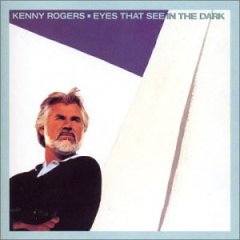
Eyes That See in the Dark is the 15th studio album by Kenny Rogers, first released by RCA Nashville in August 1983.
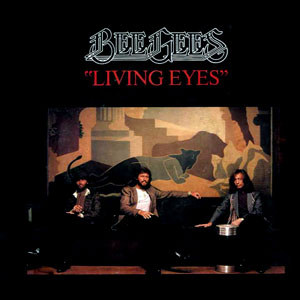
"Living Eyes" is a power ballad recorded by the Bee Gees and was released in November 1981 as the second single and title track off the LP of the same name. It was written by Barry, Robin & Maurice Gibb. The sound of this single was closer musically to the rest of the album than its predecessor, "He's a Liar".

After Dark is the third and final studio album by English singer-songwriter Andy Gibb. It features his last US Top 10 single "Desire", "I Can't Help It" and two Bee Gees numbers "Rest Your Love on Me" and "Warm Ride".

"Guilty" is a vocal duet between Barbra Streisand and Barry Gibb. The song was written by all three Bee Gees: Barry, Robin & Maurice Gibb. Released as a single from Streisand's 1980 album of the same name. "Guilty" peaked at No. 3 on the US Billboard Hot 100 chart and No. 5 on the adult contemporary chart. In the UK, the song reached No. 34 on the UK Singles Chart. The single was certified gold by the RIAA. In addition, "Guilty" won a Grammy Award in the category Best Pop Vocal Performance, Duo or Group. The song also appeared on the 2001 Bee Gees compilation, Their Greatest Hits: The Record.

Heartbreaker is a studio album by American singer Dionne Warwick. It was released by Arista Records on September 28, 1982 in the United States. Her fourth album with the label, it was largely written by the Bee Gees, and produced by band member Barry Gibb along with Karl Richardson and Albhy Galuten; Gibb and Galuten also served as musicians on the album. Warwick recorded the songs on Heartbreaker during the spring of 1982.
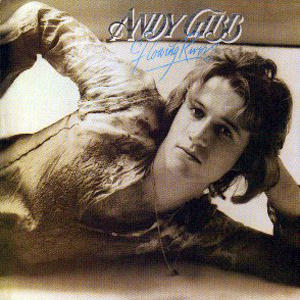
Flowing Rivers is the debut studio album by English singer-songwriter Andy Gibb. The album was produced by Albhy Galuten and Karl Richardson, with Barry Gibb on two tracks. It was released in September 1977 on RSO. Flowing Rivers was re-released by Polydor Records in 1998 in CD version.
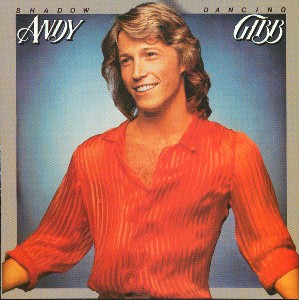
Shadow Dancing is the second studio album by English singer-songwriter Andy Gibb, released in June 1978 in the United States and September 1978 in the United Kingdom. It was Gibb's highest charting album in some countries including America and in Canada. This LP was his only album to chart in the UK. Four singles, including the three US Top 10 singles, were released from the album.
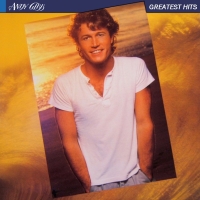
Andy Gibb's Greatest Hits was the first compilation album by Andy Gibb. It was released in 1980. Aside from the previous singles it also contains three new songs being "Time Is Time", "Me " and "Will You Love Me Tomorrow", the latter sung together with P. P. Arnold.
"Rest Your Love on Me" is a country ballad performed by the Bee Gees written and sung by Barry Gibb. It was the B-side of the US No. 1 hit "Too Much Heaven". Andy Gibb recorded the song as a duet with Olivia Newton-John for his 1980 album After Dark.

"Buried Treasure" is a song written by Barry, Robin & Maurice Gibb, and recorded by American country music artist Kenny Rogers. It was released as the B-side of "This Woman" in January 1984 as the third single from the album Eyes That See in the Dark. The song reached number 3 on the Billboard Hot Country Singles & Tracks chart and number 2 on the Canadian RPM Country Tracks chart.
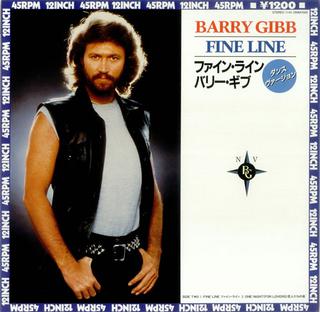
"Fine Line" is a 1984 single by Barry Gibb. The song was written by Gibb and keyboardist George Bitzer. It is the second and final single from his debut solo album Now Voyager. It was released in October 1984 in North America by MCA Records and in most countries by Polydor Records. The song was failed to chart in the United States, but it did manage to reach #50 on the Hot Dance Club Songs. The 12" version of this song was remixed by Larry Patterson. This single was less successful than his previous single, "Shine, Shine".

How Old Are You? is the second solo album released by British singer Robin Gibb in 1983, thirteen years after his debut Robin's Reign in 1970. The album was not a great success in America and failed to chart in Britain but it did spawn an international hit in "Juliet" which topped the charts in Germany. The album reached No. 6 in Germany. The album was produced by Robin and Maurice Gibb with Dennis Bryon.

Secret Agent is the third solo album by British singer Robin Gibb, released in 1984. The album enjoyed limited success, mostly in Europe and Australia. The lead single "Boys Do Fall in Love" made the Top 10 in Italy and South Africa.

"Face to Face" is a ballad performed by Barry Gibb and Olivia Newton-John. It was released as a promotional single from Gibb's 1984 album Now Voyager in Brazil, Germany, Philippines and Spain. It was also included on Newton-John's compilation Love Songs. Face to Face was also included in Olivia Newton-John's 3-Disc CD reissue of Physical-2021 Remastered Deluxe Edition.

"Why" is a song written by Barry Gibb and composed by Andy Gibb, fourth and last single released on the album Shadow Dancing. Released as a single in September 1978 around the same time as "(Our Love) Don't Throw it All Away". It was his only single that was not charted in any countries.
"Paradise" is a pop ballad recorded by the Bee Gees included on the 1981 album Living Eyes. It was later released as a single in Netherlands and Japan with "Nothing Could Be Good" as the B-side. It was included on the 1983 greatest hits album Gold & Diamonds.
"You and I" is a song written by Barry, Robin and Maurice Gibb and was recorded and performed by Kenny Rogers from his 1983 album Eyes That See in the Dark. Despite not being released as a single, it has been played on the radio, becoming one of Rogers' most popular songs. Barry Gibb sings background vocals on the intro, chorus, interlude. The performer of the song sometimes credited to 'Kenny Rogers and the Bee Gees' because Barry used his falsetto.
